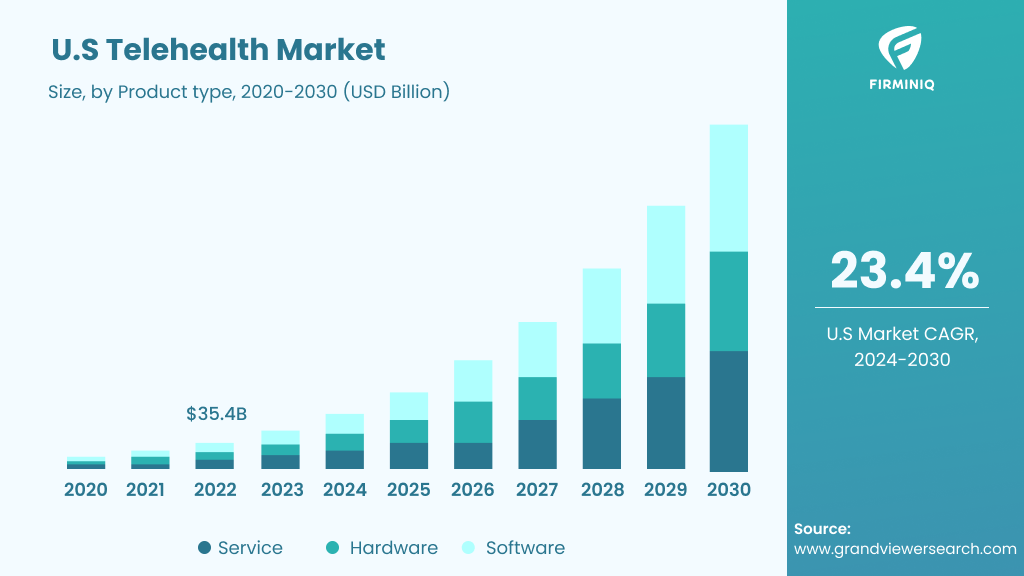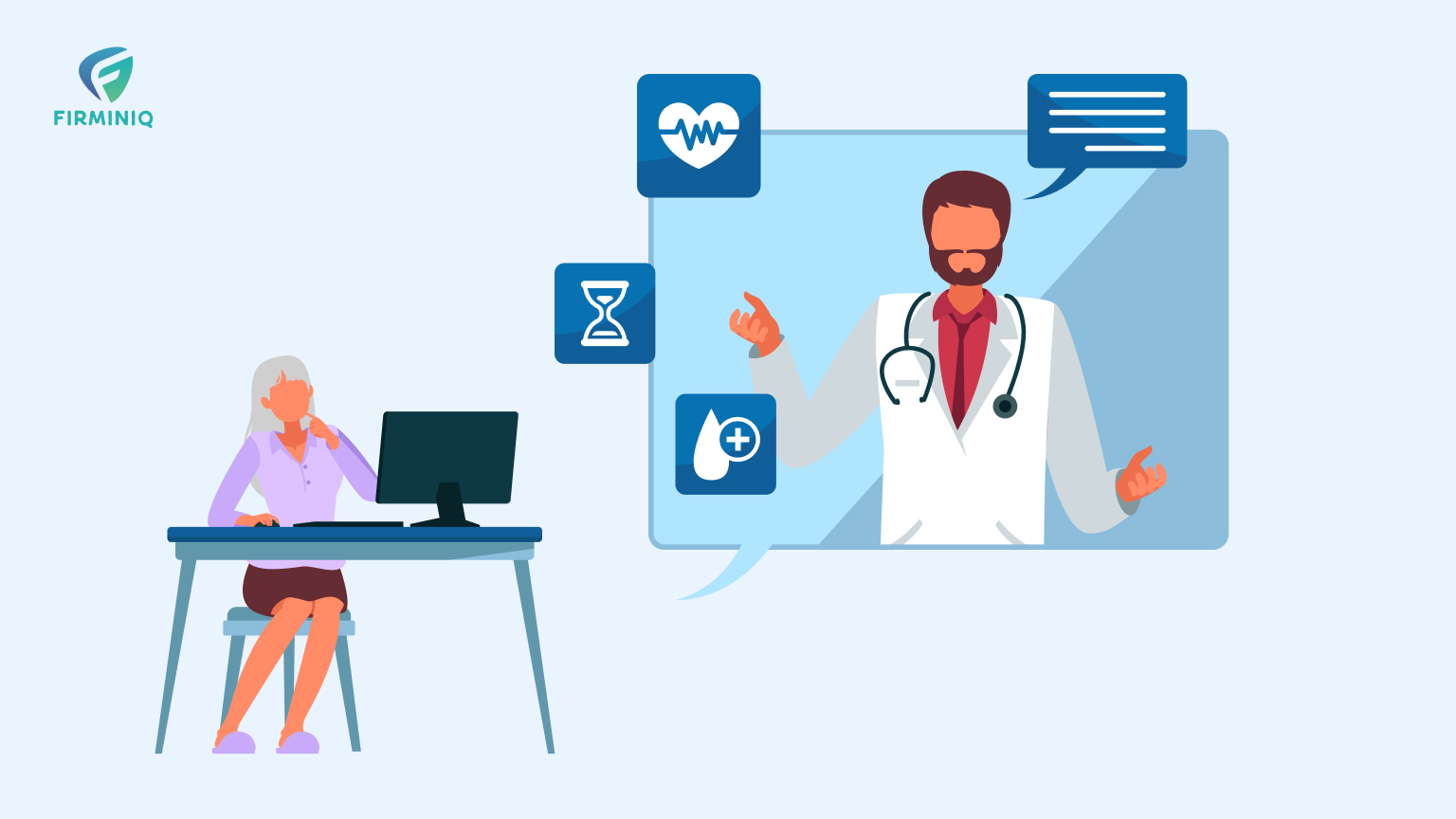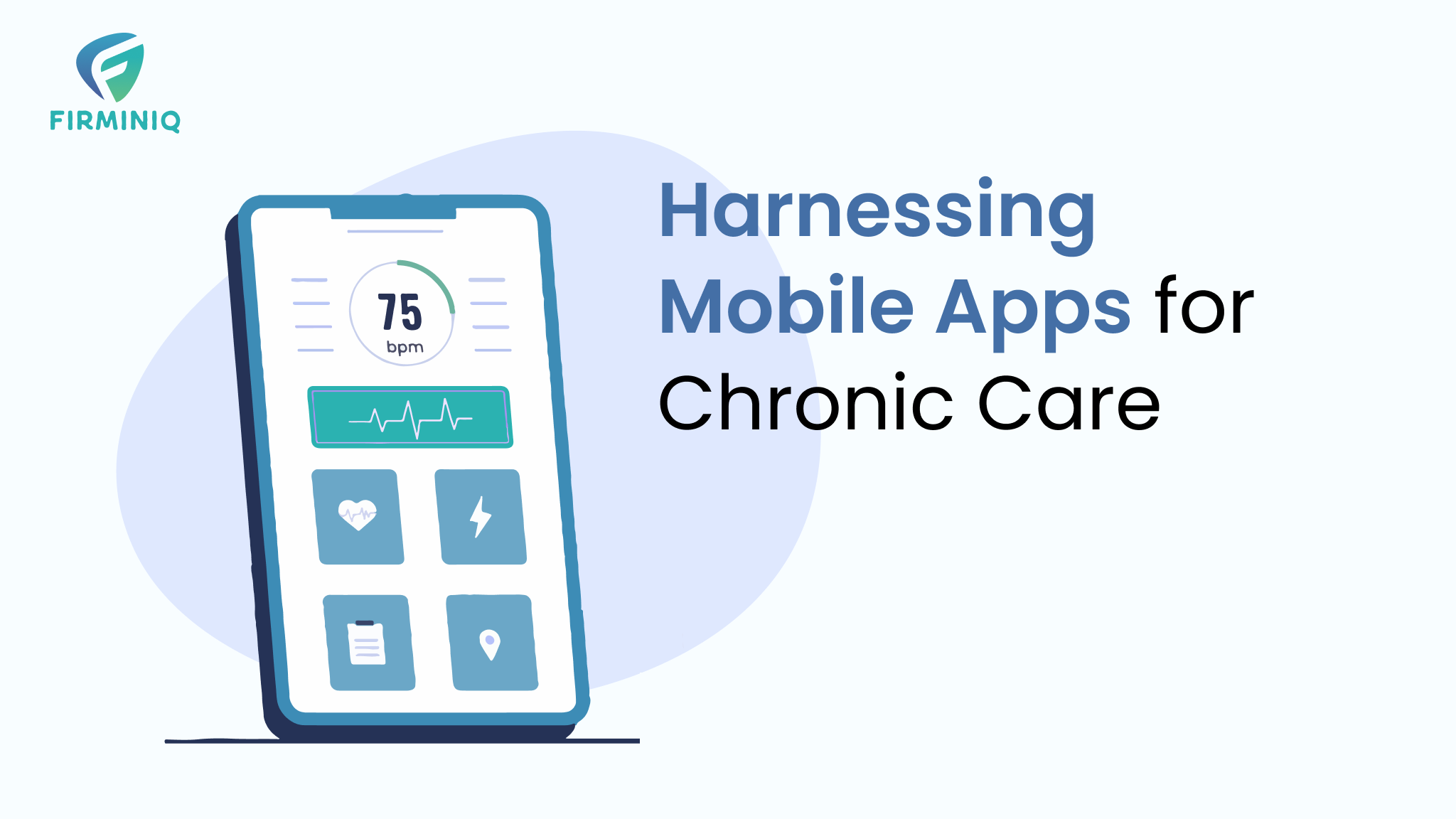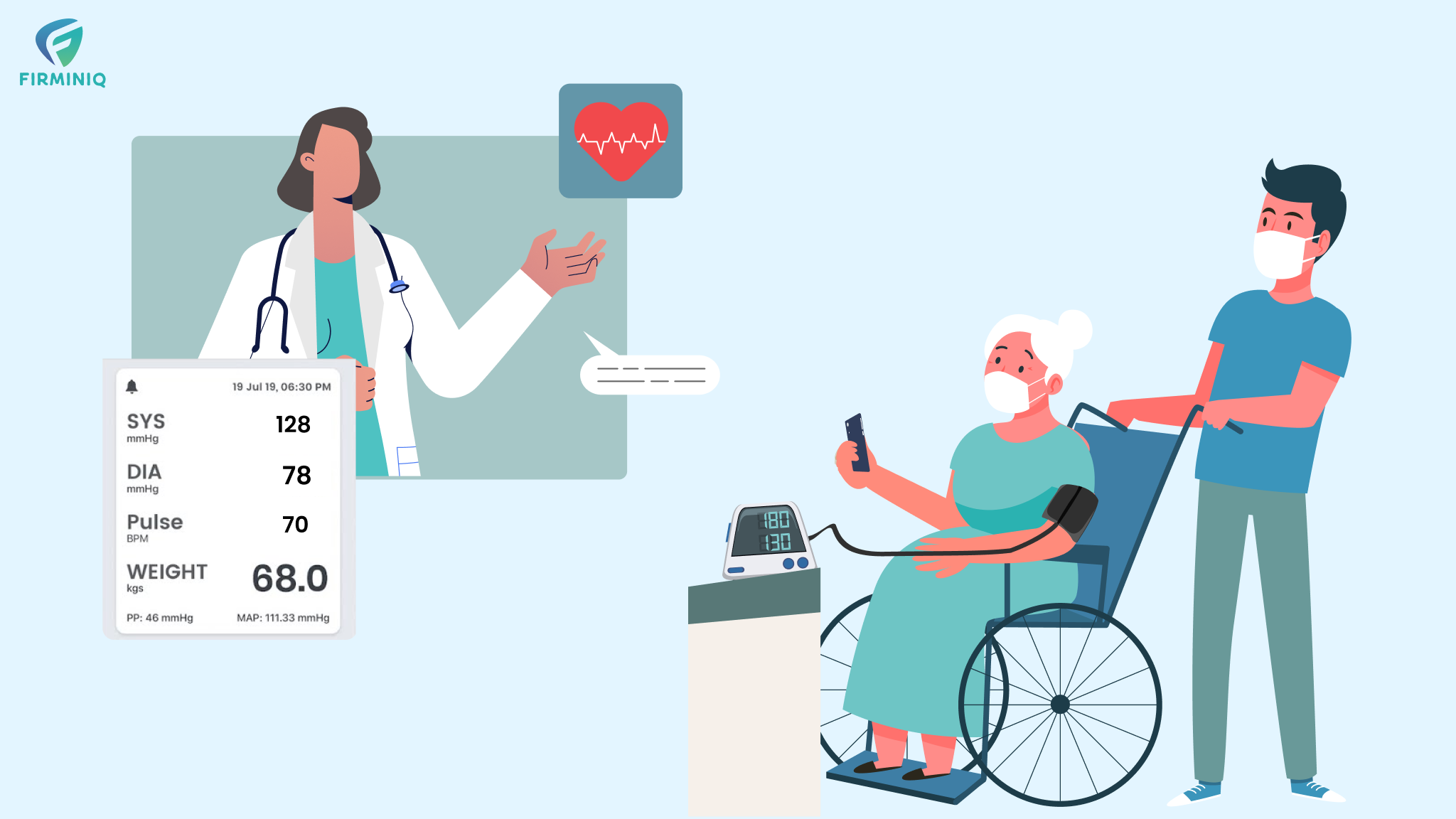Healthcare was limited to geographic constraints with limited access to people. One of the challenges associated was providing services to individuals in remote locations. However, thanks to the introduction of telehealth, it has transformed healthcare and eliminated these barriers while paving a way for more personalized care for patients.
Telehealth is continuously expanding. From virtual consultation to remote monitoring, telehealth offers a wide range of services. Embracing it allows physicians to overcome the traditional healthcare limitations and offer more personalized care to chronic patients.
As per Grand View Research, “The global telehealth market size was estimated at USD 101.2 billion in 2023 and is projected to grow at a compound annual growth rate (CAGR) of 24.3% from 2024 to 2030.
Telehealth empowers physicians to offer timely intervention, monitor the progress of patients and expand their reach. The blog helps you explore ways in which telehealth can support physicians for the patients to support their chronic patients. From virtual consultation to implementing remote monitoring technologies, know the strategies that will help you leverage the potential of telehealth to support chronic patients and lead to better health and well-being.
How is Telehealth Supporting Chronic Care Management
Telehealth has plenty of benefits for the stakeholders that can enhance their access to care, improve outcomes and more. Here are the key benefits.
1. More Accessibility to Specialized Care
Telehealth allows patients to leverage superior care from the comfort of their homes and frees physicians to efficiently allocate their time and resources. This is a major change from the conventional method – saves traveling time and is quite beneficial for patients suffering from chronic diseases.
As per Rural Health Information Hub, “telehealth can be a key component of delivering HIV/AIDS specialty care in rural communities because it connects people living with HIV to providers and specialists and makes it possible for them to receive services without having to travel to a clinical setting.”
As geographical barriers are eliminated, chronic patients can connect with healthcare providers from any location, access consultations, take opinions, and ongoing management with ease.
2. Remote Monitoring via Virtual Consultation
As per NICHM Foundation, “more than 57 million Americans reside in rural areas. Yet this population often experiences poorer overall health and significant barriers to health care, such as distance and transportation, health literacy, privacy and stigma, and provider shortages.”
Telemedicine revolutionizes healthcare by enabling remote monitoring through virtual consultations. Leveraging innovative technologies such as 5G networks and digital devices, telemedicine facilitates seamless remote monitoring and consultation. Patients and healthcare providers can connect using digital devices while allowing for virtual care from the comfort of the home.
For example, if a patient is suffering from a chronic condition like diabetes, healthcare professionals can monitor patients via digital glucometer devices. Doctors get real-time blood sugar levels that help them seamlessly manage the patient.
3. Reduced No-Show
As virtual appointments eliminate the need for patients to travel to clinics or hospitals, patients can seamlessly leverage the flexibility of consulting at the comfort of their homes. This flexibility makes it easier for the patients to commit to the appointments.
For example, in the case of child appointments, if both the parents are working it may become difficult to visit the clinic in-person, but telehealth makes it much easier as they can have a conversation anytime.
With fewer missed appointments, physicians can optimize their schedules and utilize their time and resources more efficiently. They can attend to more patients who may need urgent care.
4. Overhead Cost Reduction
Telehealth practices eliminate the need for physical clinics which can reduce physicians’ expenses. Remote consultation helps physicians reduce the cost or lease that is associated with office space, while cutting on the overhead cost. These practices often require fewer support staff compared to traditional medical offices. Tasks such as appointment scheduling, administrative work, can be handled or outsourced.
Moreover, patients’ time and money are also saved as without the need for travel to and from physical clinics, patients can access care more conveniently.
5. Timely Interventions
Telehealth allows chronic patients to access specialized care anytime, without the delays that can be caused during the commute time. This allows early intervention and proactive management. It reduces the risk of hospitalizations and complications while improving the overall health outcomes.
Patients can receive advice from physicians, medication adjustments, and treatment recommendations, leading to more effective disease management and better quality of life.
Telehealth does not only benefit patients and physicians but also significantly impacts other stakeholders. Insurance companies and providers can save costs as expensive emergency visits and hospitalizations are reduced. Overall healthcare systems can leverage the benefits of telehealth and get rid of crowds in hospitals and clinics, while allowing for better resource allocation and improved patient care.
Key Strategies for the Physicians to Follow
To leverage the maximum benefits of telehealth for chronic care management, physicians can adopt these strategies to enhance their practices.
1. Conducting Virtual Consultations
Virtual consultation allows physicians to be more careful in conducting a thorough assessment of patient history and finding out the exact details. From symptom tracking to current health status and more, video and audio calls are the best way for physicians to monitor patient’s progress, address their concerns, and guide patients as per the treatment required.
With virtual consultation, timely adjustment to treatment plan is facilitated as per the patient’s response and evolving healthcare needs. Physicians can seamlessly monitor patients’ progress and offer guidance to patients as per the requirement.
2. Remote Monitoring
Telehealth allows tracking patients’ vitals via connected devices like wearables, sensors, mobile apps and more. The devices collect data from the devices (blood pressure, heart rate, glucose, and offer valuable insights in real-time.
By monitoring patients remotely in real-time, physicians can easily identify early signs of deterioration, which is important. It therefore allows for early intervention, lifestyle modifications, and medication adjustment for patients and gain successful outcomes.
3. Patient Engagement and Empowerment
With telehealth physicians can educate patients about their health conditions, treatment options they need, care strategies to follow and more. With comprehensive information of the patient data, physicians help them to actively participate in managing the conditions and make informed decisions.
Virtual and digital consultation facilitate interactive communication between physicians and patients, while fostering collaboration in care planning. Whether it is addressing patient concerns or building trust with them, telehealth enhances the overall experience.
4. Legal and Regulatory Compliance
Ensure compliance with legal and regulatory requirements that govern these telehealth practices. Regulations like HIPAA, GDPR, and others help uphold standards of patient privacy and data protection. Also, it is vital to stay updated about changes in telehealth policies and regulations at various levels to ensure adherence to best practices and standards of care.
Also read Top 6 Regulatory Compliances for Connected Healthcare Apps if you want to have comprehensive details on regulatory compliance.
Implementing robust data security measures is vital to protect patient confidentiality and privacy during telehealth interactions.
5. Medication Management
During virtual consultations, review medications to check if patients are taking them correctly and if they are effective or causing any side effects.
Electronic tools help prescribe and manage medications to reduce errors. Teach patients about their medications, including how much to take, how to take them, and any interactions to ensure they take them safely and correctly.
Technology optimization, medication management, and care coordination are few of the additional strategies in the telehealth practices, physicians can further optimize the delivery of care, improve patient outcomes, and enhance the overall telehealth experience for individuals with chronic conditions.
Concluding Thoughts
Telehealth is evolving continuously and its contribution in managing chronic conditions cannot be neglected. Whether it is virtual consultation, engaging patients or remote consultation, telehealth is beneficial for both patients and care providers while allowing them to provide personalized care that goes beyond geographical barriers.
Wish to offer more personalized and improved care for patients with chronic conditions? Reach out to us now!







